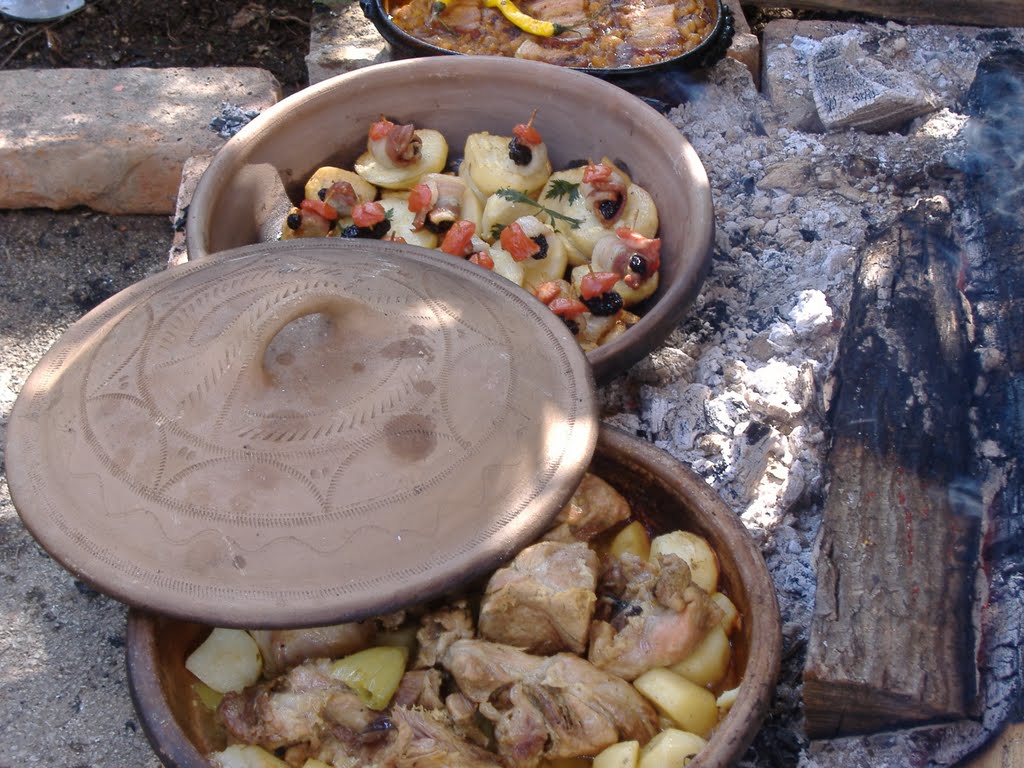Despite the fact that there are only a dozen keepers of this ancient tradition (bagpipers) left in Serbia, bagpipes still live on.
Melancholic sounds evoke the images of times long gone and take us back to the time when shepards were singing, dancing and making handcrafted instruments, while the sheep were grazing on green pastures.
Nowadays, the art of bagpiping is best preserved in Zajecar, Pancevo, Kikinda and Svrljig. Sounds of this traditional instrument can usually be heard during the local gatherings in small villages and hamlets. With the sound of bagpipes and traditional Serbian cuisine, intangible cultural heritage is renewed, kept safe and transferred from one generation to another.
Several types of bagpipes are made and played in this region. Surely the best known type is South Morava-Macedonian one, which is played in the region around Nis and in Macedonia. Other usual types include: Svrljig bagpipes, era bagpipes, Banat bagpipes and Vojvodina bagpipes. The main difference between them lies in the way they are made, their parts, but also in the way how and in which region they are played.
Bagpipes have several parts: chanter (this is the part which produces sound and it is usually made of boxwood, lilac, cornel and plum trees), chanter reed (important for tuning) bag, (materials used for bags are usually sheep or goat skins, which were previously dried), rings and a drone (a big and long pipe which makes low-pitched sounds). The whole instrument needs to be covered with tallow or wax and the bag wih lard, which helps to preserve it.
 With time bagpipes have become an important part of neofolk and neo-byzantine movement and they are present in almost every band which plays archaic music. It is truly amazing that people in Balkans still make these primitive bagpipes, which our ancestors used to play. Their sound takes us back to the past, to the time when people played kolo (Serbian folk dance) on bagpipes and when shepards made them with their own hands.
With time bagpipes have become an important part of neofolk and neo-byzantine movement and they are present in almost every band which plays archaic music. It is truly amazing that people in Balkans still make these primitive bagpipes, which our ancestors used to play. Their sound takes us back to the past, to the time when people played kolo (Serbian folk dance) on bagpipes and when shepards made them with their own hands.
The most often played songs In Svrljig region were folk dances kolo, also known by the names – devla, small and big cacak, dunda, sitnica, rumenka, dunđeranka…
Some of the best known bagpipers of this region from middle of the last century were Vidoje Ilić, Radoje Đorđević, Vukoslav Todorović, Radosav Stevanović, Cvetko Radovanović, Borivoje Kostadinović, as well as many others.
Changes in social and cultural behaviour models, that took place over time, resulted in disaffirmance of traditional instruments. Where once the bagpipes were used, accordions now prevail, and the number of people interested in playing bagpipes grew smaller and smaller.
Due to the fact that the bagpipe playing belongs to the old and almost disapearing tradition of Serbia, including this element to the list of intangible cultural heritage is of crucial importance. Along with this old practice, the list includes twenty six more elements, and some of them are: Krsna slava, Pirot kilims, City-songs from Vranje, Slovak naive painting, mantije from Novi Pazar etc.
There is a very intereseting story dating from WWI, telling about the Serbian soldier and the bagpipe player, which affirms the significans and the widespread of bagpipes in the times past. Namely, Petar Milenković went to war with three horses and bagpipes, which he used to play even when the Serbian army had its worst time having to cross The Albanian mountins. The sounds of the old instrument reminded soldiers in their most difficult time that life is still worth fighting for and that they must not give up. Those bagpipes, along with their owner, survived war, and were victoriously welcomed back home.
In order to continue the habit of bagpipe playing, which is many centuries old, systematic support is needed, as well as the training of young bagpipe makers and players. State and cultural institutions have the responsibility to protect the recognizability of this ancient art, and each individual must understand the significance of the tradition and its maintenance in order to keep the ancient culture alive.
Photo: www.radiodunav.com

















